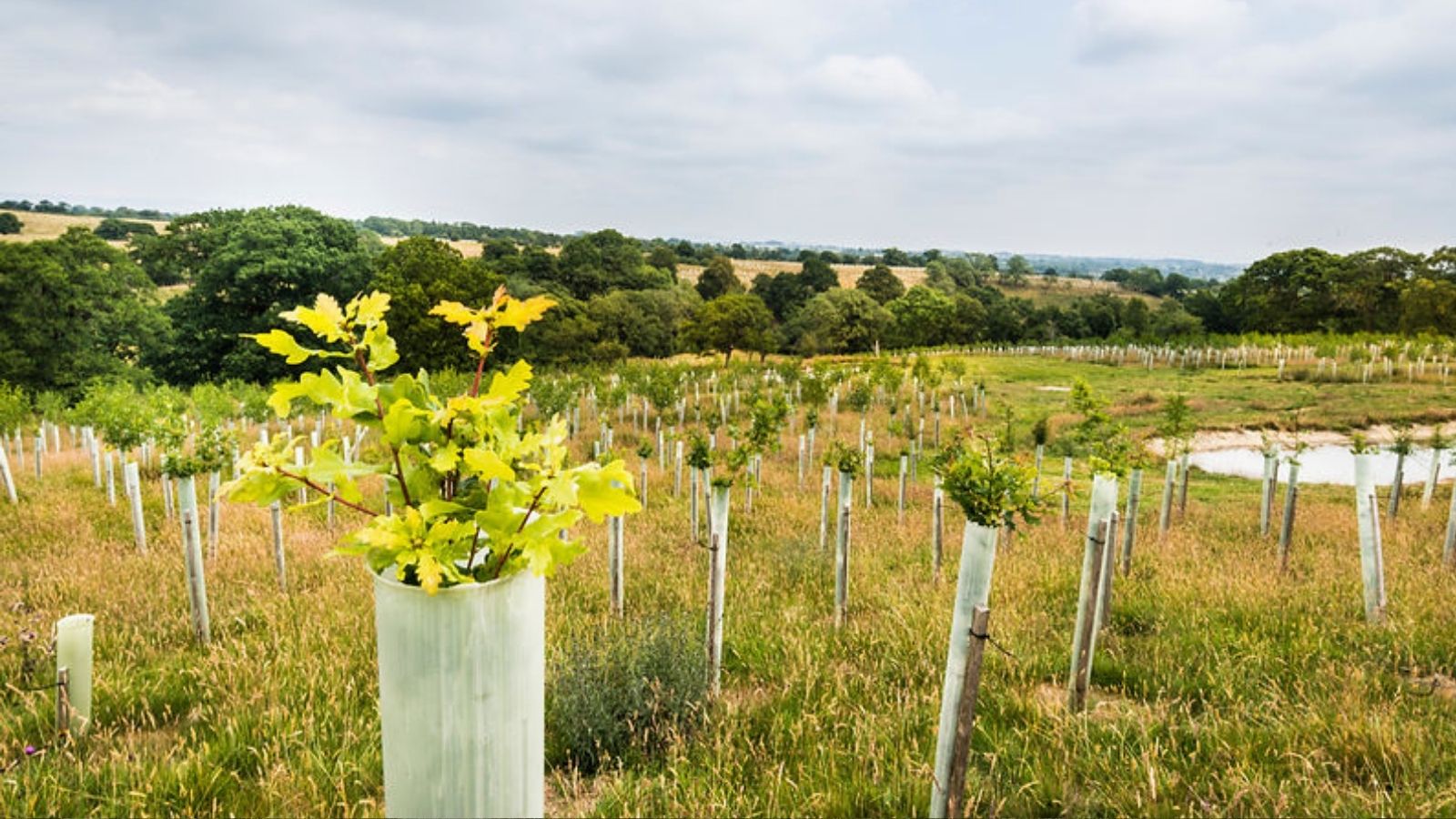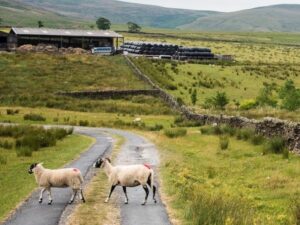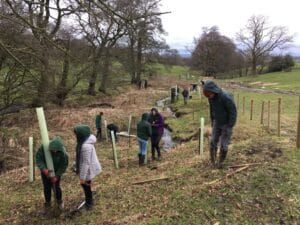Planting trees is a vital tool in the fight against climate change. But how do we make sure we plant the right trees in the right place?

When we’re planning a woodland, or any project for that matter, we spend a huge amount of time on research. One of the questions with woodlands is ‘will a woodland improve this land?’.
How do we plan woodlands?

Many of our projects start with farm visits. Our farm advisors, who are all farmers themselves, visit local farmers and landowners to give free, confidential farm advice and guidance. Then we look at three factors; is there a need, is there space, and is there any funding?
If we think this looks promising, we’ll start our research. Using GIS, a mapping tool which allows us to combine and view datasets, we can start to make some decisions. The data we look is really varied and includes information on habitat type, soil type, habitat health, land usage, rainfall levels, flood risk, special designations, public access, and much more.
If we’re sure that we’re planting the right trees in the right place, we’ll start to plan the woodland itself. At this stage we’ll start looking at different factors. For example, woodland size and species mix need to be considered, but we also need to think about the needs of the landowner and the funder. Once the details fall into place, we’ll call on our amazing volunteers to prepare the site and plant the trees.
Are woodlands the best solution?
Of course, sometimes woodlands aren’t appropriate. Our planet is a delicate balance of interlinking ecosystems, so we need a variety of landscapes.

Many habitats are just as valuable as woodlands and planting trees could cause more harm than good. Species rich grasslands and wildflower meadows, peat bogs, and high-quality farmland are just as important to a healthy, balanced environment as woodlands.
However, when planted with care, woodlands have an amazing range of benefits for landscapes, wildlife, and us humans. Native woodlands support native species, and provide places for people to explore, exercise, or just lose ourselves in nature. Like many other habitats, woodlands play a vital role in tackling the climate crisis and helping with nature recovery.
The right trees in the right places can also help to clean the air we breathe, reduce flood risk, capture carbon, and improve water quality.
What happens if a site isn’t suitable?
If a site isn’t suitable, we don’t simply walk away. Ribble Rivers Trust have a range of skills that can help improve other habitats too. Whether that involves restoring peat bogs, rejuvenating wetlands, creating homes for wading birds, improving river channels, or giving farmers help, advice, and guidance on improving land usage, we can help make the whole catchment a better place for wildlife and people.
Luckily, we also work with other organisations such as the RSPB, Forest of Bowland AONB, Wildlife Trusts, Yorkshire Dales National Park, and the Woodland Trust to share information and make sure we’re all at the cutting edge of environmental science and land management.
You can discover more about this years woodlands by clicking here.

